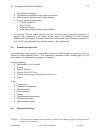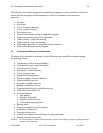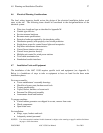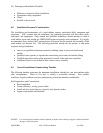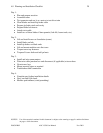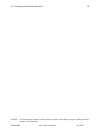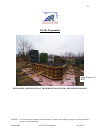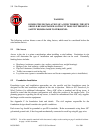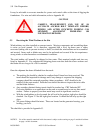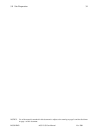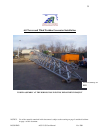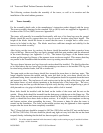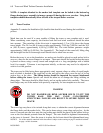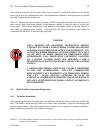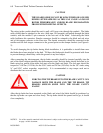
5.0 Site Preparation
NOTICE: Use of the material contained in this document is subject to the warning on page Iv and the disclaimer
on page v of this document.
DOC012R02 AOC 15/50 User Manual Nov 2001
32
WARNING
DURING THE INSTALLATION OF A WIND TURBINE, THE SITE
SHOULD BE MAINTAINED SO THAT IT DOES NOT PRESENT A
SAFETY RISK/HAZARD TO PERSONNEL.
The following sections discuss some of the siting factors, which must be considered before the
wind turbine arrives.
5.1 Site Access
Access to the site is a prime consideration when installing a wind turbine. Limitations in site
access will determine the type of installation and equipment that can be used. Potentially
limiting factors include:
• Roadways (existence, permits, size, surface, restricted use, weight bearings)
• Bridges (size, load capacity, width and height clearances)
• Physical clearances (overhead wires, lamp posts, turning radii, grade)
• Traffic (movement to and at the site)
• Lay down area (space to assemble the tower and locate components prior to installation)
5.2 Foundation Installation
Foundation types and installation approaches are site specific and the foundations must be
designed for the load conditions expected at the site in question. Refer to IEC Standards for
Wind Turbines for additional information. Since AOC offers a standard and tilt-up tower, it
should be noted that the chosen configuration will affect the position of the anchor bolts. For
planning purposes regarding the tilt-up towers, it should be remembered that AOC only supplies
the hinges not the erection equipment.
See Appendix F for foundation loads and details. The civil engineer responsible for the
foundation design should consider site specific conditions.
Each tower leg should be grounded as per EIA standards. Rohn recommends using three 5/8”
galvanized ground rods, 8 feet long and mechanically connected to each leg using #4 gage wire.




